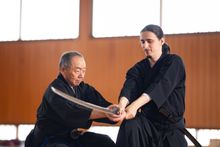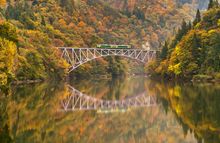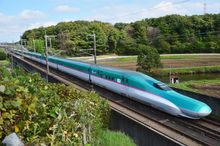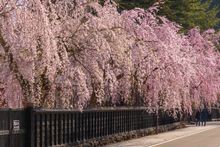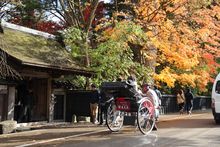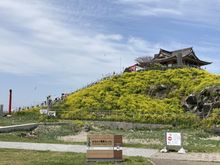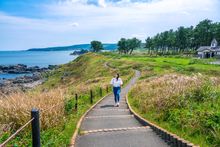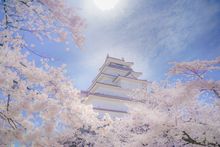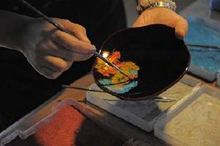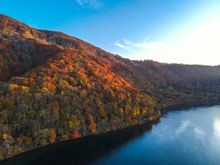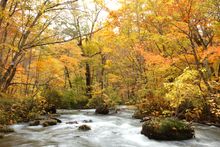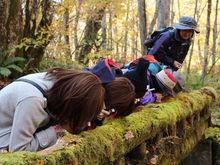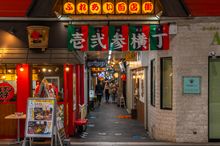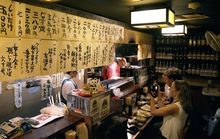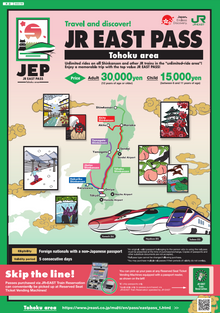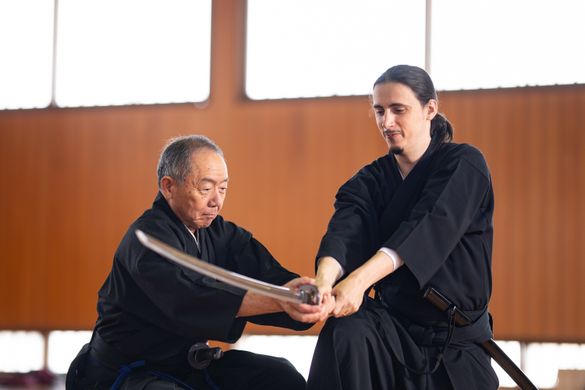 28 Feb 2025
28 Feb 2025
Tags: Japan, Tohoku, Tourism, Tourism News, Destination, Food, Unique, Japanese tradition, Nature, samurai

In recent travel news, there have been many articles about overtourism in popular tourist destinations around the world. Japan is no exception, but the northern tip of Honshu, known as Tohoku, is a large region with much to offer that is not yet well known to foreign tourists. For those who enjoy the TV drama SHOGUN, Tohoku also has a lot of samurai history and important places to visit. Here I would like to introduce seven places in Tohoku that offer unique experiences. Before I begin, let me make two important points:
- Like the rest of Japan, Tohoku has four seasons, each with its own attractions and beautiful scenery. Tohoku is in the northern part of Japan, where the snowfall is visually pleasing and ideal for skiing. Summers are cooler than in the south of Japan, making it a perfect summer retreat away from Tokyo.
- Tohoku is easily accessible from Tokyo by the Tohoku Shinkansen, Akita Shinkansen, and Yamagata Shinkansen. The Tohoku Shinkansen is the fastest train in Japan, taking only three hours from Tokyo Station to Shin-Aomori Station near the tip of Honshu and then on to Shin-Hakodate Hokuto in Hokkaido.
Akita: Let's make a furry friend (Akita Inu)!
Some of you may know the famous Akita dog, Hachiko, whose statue stands outside of Tokyo's bustling Shibuya Station. born in 1923, Hachiko and Professor Ueno traveled to and from the station together every day, and even after the professor died, Hachiko continued to wait alone every day, becoming a symbol of the loyal dog. There is even a Hollywood movie, “Hachi,” based on Hachiko. If you take the Shinkansen to Akita, you can meet Akita Inu in his hometown. Last year was the 100th anniversary of Hachiko's birth. There are places where visitors can meet Akita dogs and even walk them. Souvenirs featuring Akita dogs are also a must.
Murayama City: Samurai swordsmanship and soba noodles
If you have read about Japan in the Samurai era or watched the TV drama “Shogun” and are interested in the martial arts, you should visit Murayama City in Yamagata Prefecture. Here you will find Japan's only Iaido shrine, dedicated to its founder. Iaido is the art of self-defense and is the art of immediately drawing one's sword. Its name comes from “i” (to be aware) + “ai” (to meet) + “dou” (way or path). At the Hayashizakibunkan, a training hall adjacent to the shrine of the same name, visitors can learn the techniques and philosophy of Iaido from a master. And you can actually try cutting tatami mats with a sword. If mental and physical training has whetted your appetite, you can also taste Murayama's famous soba (buckwheat noodles).
Kakunodate: Samurai Town and Zen Meditation
Located along the Akita Shinkansen bullet train line from Morioka to Akita, Kakunodate is famous for the samurai residences that line its streets. Although crowded in spring when the cherry blossoms are in bloom, it is a good place for a leisurely stroll throughout the year, admiring the gardens and buildings of the samurai residences. In a quiet suburb about 3 km away from Kakunodate is Mampukuji Temple. At Manpuku-ji Temple, visitors can sign up for tours that include a monk's explanation of the relationship between bushido and Buddhism, Zen meditation, a meeting with the temple's abbot, and a tea ceremony. Apart from the chirping of birds in the garden, this is an experience in a serene environment.
The Michinoku Coastal Trail: Healthy hiking and ocean views
After the earthquake and tsunami that devastated parts of the Tohoku region, the Michinoku Coastal Trail was created as one of the reconstruction projects. This scenic 625-mile trail follows the Pacific Ocean coastline from the coast near Hachinohe City in Aomori Prefecture, through Iwate and Miyagi prefectures, and along the coast near Fukushima City. Walkers can choose to walk a short section, or those who wish to challenge themselves can attempt the entire walk. Located along the coast, it is flat, easy to walk, and healthy while breathing in fresh ocean air. “Lonely Planet” and “National Geographic” have also praised the trail. One of the great perks of hiking the trail is the opportunity to not only meet other hikers, but also locals at restaurants and lodges along the route. For a general description of the trail and more detailed information, check out the website below.
Aizu Wakamatsu Lacquerware Making Experience
Located inland at the foot of Mt. Bandai, Aizu Wakamatsu is known for its samurai culture. Visitors can tour Tsurugajo Castle and samurai residences, and the Aizu Festival is held in late September. Visitors can also stroll around the castle ruins park in kimonos and participate in various martial arts classes. The culture of the samurai was also rich in highly sophisticated crafts. Aizu Wakamatsu produced colorful cotton textiles called Aizu cotton and exquisite lacquerware called Aizu-nuri. Why not take this opportunity to make your own lacquer ware using the maki-e technique? Some stores sell the finished lacquerware, and some allow visitors to observe the craftsmen at work, so you can try your hand at making a souvenir. It would be a good idea to try your hand at making a souvenir, something you would not be able to do at home.
Also, when in Aizu Wakamatsu, why not take a day trip to the nearby charming Ouchi-juku? This old town has changed little since the Edo period. The thatch-roofed houses have small restaurants and stores selling local specialties, and there is even a kimono service that allows visitors to dress up and take a stroll.
Oirase Mountain Stream: Seeing Japan's Pride of Moss in its Original State
In Kyoto and other famous Japanese gardens, one often sees moss as one of the main elements in the design. On the other hand, why not visit a natural spot where lush green moss grows in abundance? Aomori Prefecture's Oirase Mountain Stream surrounds a rushing mountain stream flowing out of Lake Towada. The azure waters of the lake attract water sports enthusiasts and visitors to the lakeside hot springs. Visitors can enjoy hiking and biking in the valley, and enjoy the lush forests, waterfalls, and colorful autumn foliage. There are also tours where visitors can learn about the different types of mosses in the canyon. Please note, however, that these are not winter activities!
Sendai: A fun “Hashigo-zake” tour where you can drink, eat, and have fun!
Sendai, a major stop on the Tohoku Shinkansen line heading north from Tokyo, is a metropolis that offers a wide variety of food. Most famous are the “izakaya” in the narrow alleys known as “Bunka Yokocho” and “Iroha Yokocho”. Beef tongue is a Sendai specialty, but there is also oden, gyoza, and a wide variety of sake. It is the perfect place for a hodgepodge of drinks. If you are not sure where to go and what to eat, there are guided tasting tours available. Near Sendai, along the coast, there is a town called Arahama, which can be reached by bus. The Arahama area was severely affected by the 2011 tsunami, but you can see an elementary school (now a museum) where hundreds of people were miraculously saved. Nearby is JR Fruits Park Sendai ARAHAMA. There, visitors can support the Tohoku region by picking, buying, and eating fresh fruit at the café.
Great Rail Pass for Traveling in Tohoku
If you're going to go all the way to Tohoku, you'll want to make your trip as affordable as possible, and the JR EAST PASS TOHOKU area is the most convenient way to explore the entire Tohoku region for 30,000 yen, or about $200 (JY 150 = US $1). It allows unlimited rides on the Shinkansen and all other JR East trains for five consecutive days, making it the perfect “companion” for your trip. Passes can be purchased online prior to your arrival in Japan, and Shinkansen reservations can be made online at the same time; automatic ticket vending machines located at JR East stations allow you to redeem your pass without waiting in line at the ticket counter. For more information, please visit
https://www.jreast.co.jp/multi/en/pass/eastpass_t.html
Three points of the JR East Rail Pass
- the pass can be purchased one month in advance and train reservations can be made immediately on the dedicated website
- you can pick up your pass from a ticket machine, so there is no need to wait at the counter.
- stores in the JR-East station buildings are running a campaign offering discounts and gifts to pass on to passengers. https://www.jreast.co.jp/multi/en/andekinaka/


